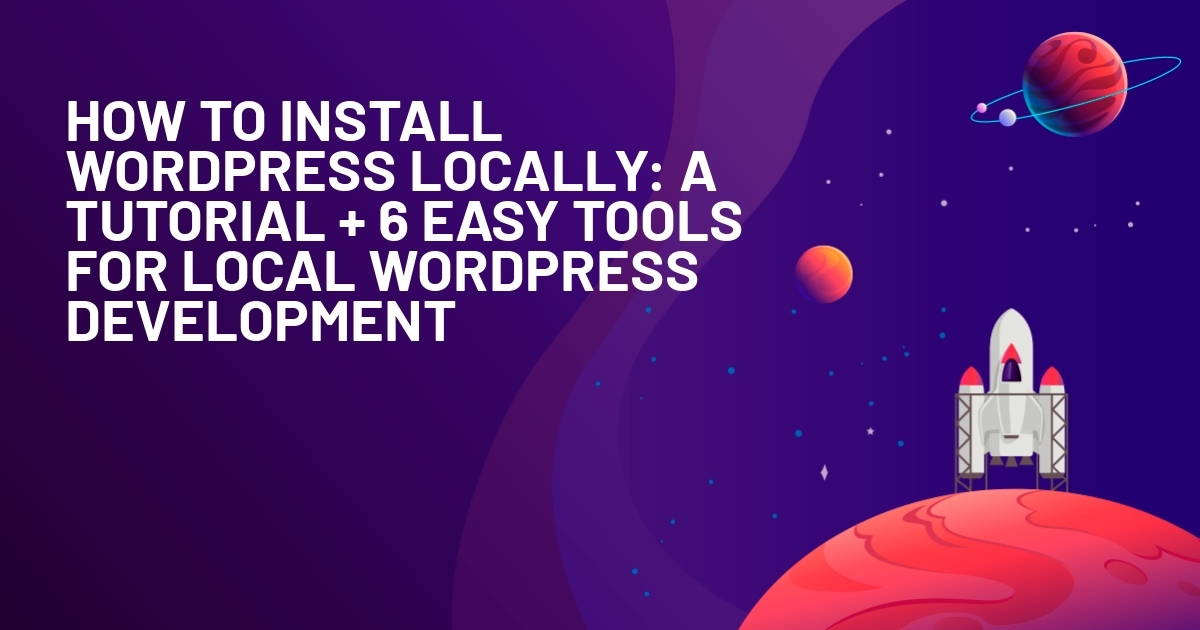WPLift is supported by its audience. When you purchase through links on our site, we may earn an affiliate commission.
Mastering the Art of WordPress Staging: Your Step-by-Step Guide
The process of creating a website can be fraught with dangers. It’s never nice, for example, to make adjustments and then discover that your live website has collap2sed. Fortunately, employing a staging site may let you build and innovate your website in a safer setting.
With the help of a WordPress staging site which is a duplicate of your live site. It allows you to test any updates or big new features in a secure environment before implementing them. Before moving to production, developers often utilize staging sites to test changes and address issues.
In this post, we’ll go through the advantages of website staging and teach you how to create a WordPress staging site for your site.
What is a WordPress Staging Site?
A WordPress staging site is a private version of your live website that only you have access to. It has the same content, plugins, and theme as your live site.
This enables you to test any modifications or substantial new features before deploying them to your live, public-facing website.
Generally speaking, this should not be visible to the general public, your primary visitors, or even search engines. That’s because you mostly use it for development, which might result in a white screen of death (WSoD), crashes, sluggish page loading, and other issues.
A WordPress staging site serves three primary purposes:
- This site will house the most recent version of the features, code, or mock-ups you’re presently working on. As a result, it’s ideal for testing new modifications before deploying them to the live site.
- A duplicate of a live website you’ve developed – you may save time by not having to start from zero when establishing a WordPress website with a similar structure. When anything unexpected happens on the live site, this may also be used as a backup.
- A location for pre-launch QA (Quality Assessment) – modifications to your website will be extensively checked during the QA process to detect any potential bugs or malfunctions. This is especially true for well-established websites since an outage or poor user experience can result in a loss of revenue.
Why is a WordPress Staging Site Important?
It is quite useful to set up a staging site for your website. You may essentially remove the risk of your live website going offline due to an update or alteration if you utilize it for all website updates.
Working in a staging environment ensures that your visitors’ experience is not disrupted while you make adjustments. The old site will continue to function normally until the choice is taken to go live with the updates.
The following are some additional advantages of utilizing a WordPress staging site:
- It enables you to solve plugin problems without affecting your live site.
- The negative impact of a crashed website on conversion and sales is eliminated when you use a staging site.
- Without the time limit of having the actual site in maintenance mode, website owners may properly test every feature at their leisure.
- Make it possible for you to create better websites.
- Allow you to discover problems and bugs without jeopardizing your site’s security. They’re typically straightforward to set up and maybe done locally or online
The Cons of Using a Staging Site
Unfortunately, it also comes with drawbacks. The following listed are the primary disadvantages of utilizing a staging site:
- Since you need to test changes first, updating your website takes longer.
- A staging site service is frequently charged by web providers.
- It’s possible that staging sites aren’t perfect copies of real sites, for example, caching is not usually enabled on a staging site.
Creating Your WordPress Staging Site
Despite the many advantages of utilizing a WordPress staging site, you won’t be able to make use of them until you know how to put one up. So, let’s get started on creating a WordPress staging site. When danger happens, this is an efficient approach for preparing for and minimizing any downtime on the live site.
Creating a WordPress Staging Site Through Your Web Host
Setting up a WordPress website through your server is the first choice for staging it. The majority of managed hosting companies allow you to set up a staging environment for your website. At the touch of a button, new staging zones may be established, deployed to your live website, and then deleted.
Creating WordPress staging sites with Kinsta
- It’s extremely easy to set up a staging site. Simply go to the left menu and select “Sites.” A list of your sites/installs will appear.
Pick the site for which you wish to establish a staging environment, then select “Staging Environment” from the “Change Environment” drop-down menu in the upper right.

- Then select “Create a Staging Environment” from the drop-down menu.

SSL will be enabled on your staging site if SSL is enabled on your live site.
You need to wait 10-15 minutes for DNS to propagate and the staging to be established. Your staging environment will then have its own control panel containing connection information, DNS, backups, tools, and plugins. phpMyAdmin may be launched directly from the dashboard.
Create WordPress Staging Site with Bluehost
One of the top WordPress hosting companies is Bluehost. They provide a one-click staging site solution with all of their plans.
- Go to your WordPress Dashboard.
- Select Staging from the menu after clicking Bluehost.

- Click Create Staging Site on the Staging page.

- Wait for Bluehost to finish setting up your staging site.
- Start experimenting with your staging website.
After you’ve finished making changes to your Bluehost staging site, you can choose whether or not to apply those changes to your live site. You have the option of deploying all modifications, only the files you changed, or simply the changes you made to your database.
You can select whatever option makes the most sense for that update based on the changes you made.
Creating a WordPress Staging Using Plugin
WP Staging

While WordPress staging sites are important for behind-the-scenes work, you don’t want people seeking for your live site to unintentionally stumble onto them. This might generate a lot of misunderstanding among your consumers and possibly harm your brand’s reputation.
It’s possible that spiders indexing your staging site will cause problems with your SEO (SEO). This is why, in an ideal world, your staging environment will be private and inaccessible to Google and other similar sites. WP Staging, on the other hand, allows you to build a secure and private WordPress staging environment.
You may rapidly build a staging site with a single click, without having to deal with domain settings or multiple WordPress installations. It overcomes the primary difficulty with most staging systems because of these features: it is FAST.
Price
- You may clone your website for free with this program. To put it another way, you may establish a staging site for free using your live site.
Steps to Create WordPress Staging Site
- On the main site, install the WP Staging plugin.
- Start cloning with WP Staging and give your staging site (a subdirectory) a name.


- Go to your new staging site and log in.
BlogVault Staging

Because BlogVault is essentially a backup plugin, it handles staging exceptionally well.
The best part is that setting up a WordPress staging environment with BlogVault is a one-click procedure that takes only seconds. A staging site is established on a separate server than your live site, ensuring that your live site remains unaffected. The plugin works with all web hosts because the staging site is hosted on BlogVault servers.
The most powerful feature of BlogVault, in our opinion, is selective merging. Because no one wants to repeat steps to send changes to production after testing on staging, any half-decent WordPress staging plugin will offer a merge to production functionality. A selective merge, on the other hand, takes things a step further by highlighting the differences between the staging and live sites. You may then decide which adjustments to incorporate and which to leave out.
Price
- Backups and staging are included in the BlogVault plans, which start at $7.40 per month.
Steps to Create WordPress Staging Site
- Visit the BlogVault website and register with your email address.
- Select your preferred website from the BlogVault site listing page.

- Page with a list of websites
- You’ll be sent to the Site Detail page. Select Staging from the drop-down menu on this page.
- Then, under the Staging section, pick Creating a Staging Site.
- Before progress is complete, if you click the Return to Site Details Page button, that is, the Dashboard, a little progress spinner will appear next to an unclickable button. Make a staging site for your project. This is your Staging site’s Real-Time Progress Display while it’s being built.
- After you’ve finished, make a note of the login and password you were given. This will be needed to get inside the staging area.

WP Stagecoach

Without WP StageCoach, any discussion about WordPress staging would be incomplete. It’s one of the most widely used staging plugins, as well as one of the finest we’ve seen.
What we liked best about WP StageCoach right away was its ability to integrate the databases of your staging and live sites. You are merging the database, not overwriting it. So your live site isn’t losing any new subscribers, contact information, or basket items.
Your staging site is stored on WP StageCoach’s own server, not on the server where your real site is hosted. You won’t have to worry about the staging site consuming resources and slowing down your live site.
Price
- Plans with WP StageCoaching start at $12 per month.
Steps to Create WordPress Staging Site
- Install WP Stagecoach on your WordPress site
- Enter your license key
- In your dashboard menu, choose WP Stagecoach. Then go to Ride the Stagecoach.

Creating WordPress Staging Site Manually
This approach necessitates the creation of a staging site for your WordPress installation. It is intended for experienced users and necessitates more effort than the previous techniques.
Another downside of this technique is that when you deploy updates from staging to the live server, your website will be briefly inaccessible.
So here’s how to manually create a staging site.
- For your staging website, you’ll need to create a subdomain. Go to the dashboard of your hosting account and click the Subdomains option under the domains section.
- The Duplicator plugin must then be installed and activated on your live site. After activating the plugin, go to the Duplicator menu in your WordPress admin sidebar and select the Create New option.

- The website duplicator wizard will now be run by Duplicator. It will first conduct some checks to ensure that everything is in working order. If all of the things are marked as “Good,” click the “Build” button.

- After you’ve completed it, you’ll be able to download the Installer and Archive packages. To download both files to your computer, click on the ‘One-click download’ link.

- Both of these files must be uploaded to the file directory of the subdomain you just created.
- After that, you’ll need to create a new database for your staging WordPress site. Let’s go ahead and make one.
- Go to the control panel of your WordPress hosting account and click the MySQL Databases icon under the Databases section.

- On the following page, give your database a name and then click the Create Database button.
- The next step is to make a MySQL user for your database. Fill up the username and password for your new database user under the MySQL Users section.
- You must now provide this user access to and modification of the database you established previously. Simply pick your database and the user you just created in the ‘Add user to database’ section.
- You’ll be prompted to choose the user’s rights. Select the checkbox for “All Privileges” and then click the “Make changes” button.
- Now you can utilize your database to create your staging website.
- Then, in a new browser tab, go to https://yoursubdomain.example.com/installer.php and type in the subdomain of your staging site. Remember to change your subdomain with your own domain name and example.com with your own subdomain. The Duplicator installation wizard will be launched as a result of this. Wizard for installing Duplicator

- The archive file will be searched for by the installation. To proceed, tick the terms and conditions checkbox and then click the next button. The installer will now prompt you to input the details for your WordPress database. Localhost is most likely to be your host. The details of the database you established for your new domain name in the previous stage will be entered after that.
- Connect to the database. To continue, click the next button once you’ve finished. Duplicator will now unpack your archived WordPress database backup into your new database.
- It will then prompt you to adjust the site’s URL or Path. You shouldn’t have to make any changes because it recognizes the URL and path of your new subdomain automatically. If it doesn’t, you’ll need to modify the URL to point to your new subdomain. Then, to proceed, click on the Next button.

- The migration will now be completed by Duplicator.
On the new staging site, click the ‘Admin Login’ button to access the WordPress admin portion of your website.
You’ve now completed the setup of your staging site. Let’s secure it by making your subdomain password-protected.
Go to the cPanel dashboard of your hosting account and click the directory privacy button.

- After that, choose your subdomain folder and tick the box that says “password secure this directory.” You’ll be prompted to give this option a name, as well as a username and password.

- Protect your staging site, set it up with a password. To save your settings, click the save button. The password protection has now been applied to your staging site. You may now work on your staging site and make any necessary adjustments.
Safely Migrating WordPress Staging Site to live
When you’re ready to deploy modifications from your staging server to the live server, repeat the processes above.
Create a new Duplicator package on your staging server and save the Installer and Archive files to your PC.
The next step is to go to your live site and generate a full WordPress backup.
You’ll need to remove all WordPress files and directories from your live website after you’re finished. This implies that your WordPress site will be unavailable for a period of time.
Finally, execute the Duplicator installation process to import the staging site to the live server.
Wrapping Up!
That’s the end of the tutorial. While there are other ways to stage your website, utilizing a plugin is the simplest and most cost-effective. Using a plugin to stage your site has no danger of damaging your website, unlike the manual way. We hope that this article helps you to learn how to create a WordPress stage site.
Let us know how it goes! :)









Hi Colin!
Great article! Unfortunately the WP Staging plugin doesn’t work with WP multisite. What would be your strategy for staging a multisite project?
Kind regards, Danijel
Hey Danijel, I’m not super familiar with MultiSite unfortunately so I’m not 100% sure. I imagine the manual method should still work with MultiSite because MultiSite uses a single database. Unless you’re using domain mapping, in which case I’m not sure how to make it work.
That seems difficult compared to just moving it with All In One WordPress Migration plugin. Also better to do it on a subdomain.
I think this method gives you a bit more flexibility and doesn’t take any more time once you get the hang of it. Maybe not quite as beginner friendly, but worth it still imo.
thanks for the infomations..
Information is very useful, thanks a lot sir